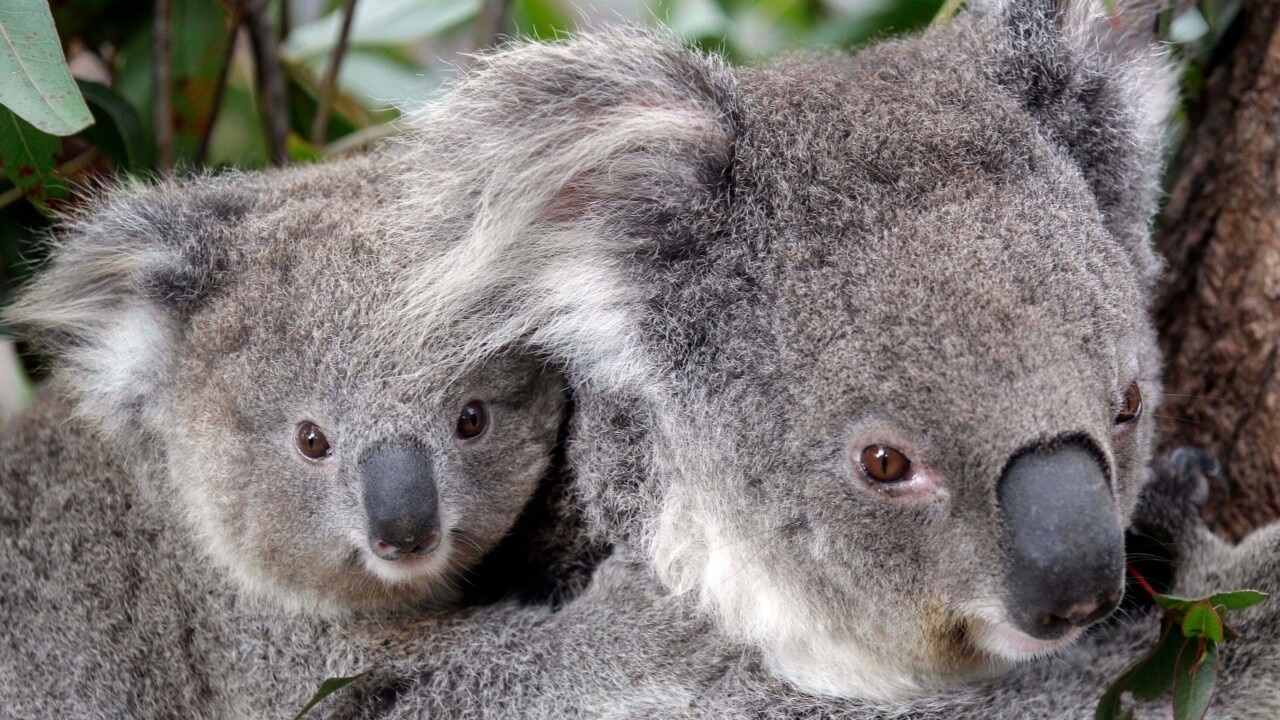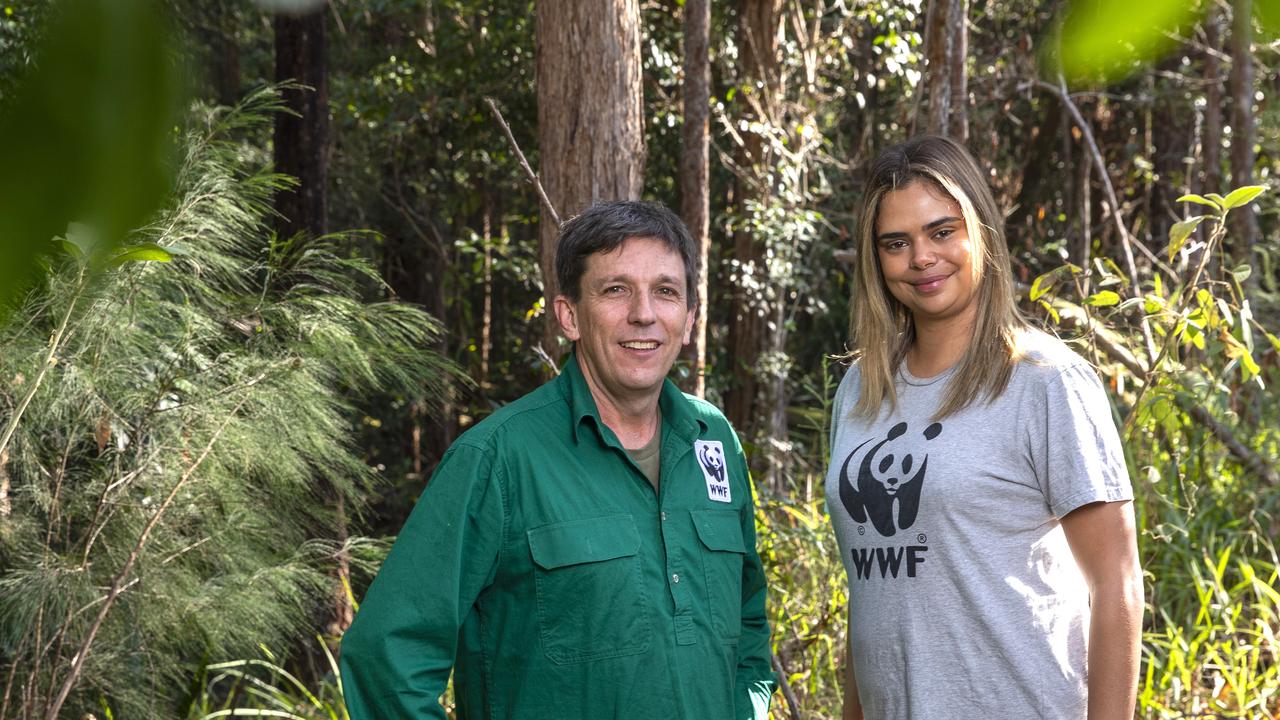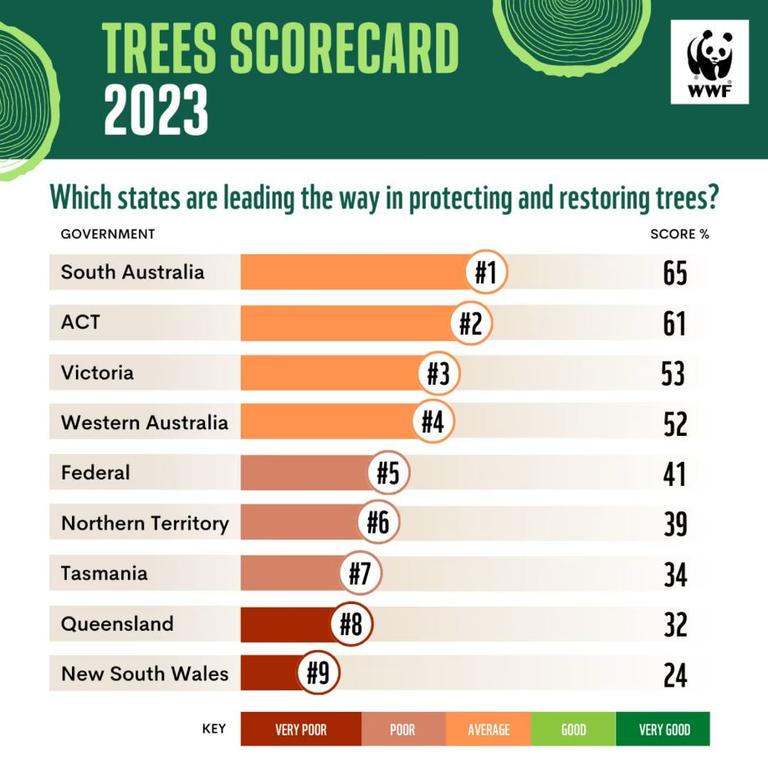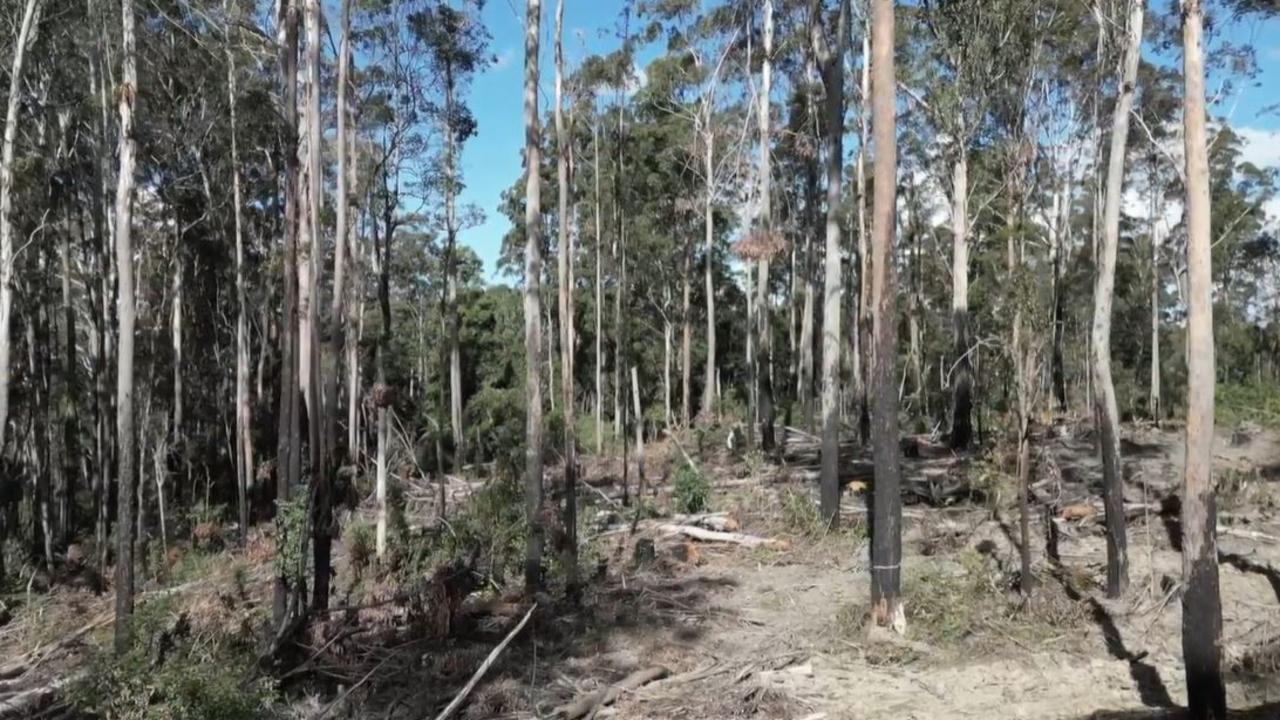Model Samantha Harris fights to save Aussie icon from extinction
After seeing the conronting scenes firsthand, Samantha Harris has joined the fight to save a beloved native species.

An Australian model has joined the fight to stop native logging after a scathing new report exposed the alarming rate at which land is being cleared.
The World Wide Fund for Nature Australia (WWF) has released its first national scorecard on efforts to protect and restore trees, with NSW deemed the worst performer among the states.
Logging operations helped put the state at the bottom of the list, with more than 264,000 hectares of land cleared between the financial years of 2018 and 2021.
That is the equivalent of 180 football fields bulldozed every day.
Indigenous model and WWF ambassador Samantha Harris recently spent time with the organisation in northern NSW to see first hand the damage done by land clearing and logging.
“It was definitely very confronting to see it first hand, it’s horrific what we’re doing to the land,” Harris said.

“No government is doing enough to protect and restore trees,” conservation scientist and Towards Two Billion Trees senior manager Stuart Blanch said.
South Australia came out on top after scrapping native forest logging and making strong commitments to reduce deforestation and conserve existing forests.
The ACT, Victoria and Western Australia followed in that order with an “average” score to indicate that while progress is being made, there is still a long way to go.
In her role as ambassador, Harris has witnessed large swathes of koala habitat cleared for logging operations and been warned of the very real possibility of further population declines if deforestation continues at the current rate.

The latest estimates suggest there are less than 250,000 koalas in Queensland, NSW and the ACT, according to the Department of the Environment.
Dr Blanch warned that the iconic Australian species was shrinking far more rapidly than many Australians expected and largely due to a lack of native forest corridors to call home.
“At the moment the world is on track for 2.7C warming and we’re still damaging our forests, so I see a very difficult future ahead for koalas,” he said.
“It’s absolutely devastating,” Harris said.
“When people think of Australia, they think of these beautiful koalas and the way it’s going, we potentially probably won’t have them anymore.”


A proposal to ban native forest logging across the country was debated and ultimately defeated at the Labor Party’s national conference in Brisbane last week.
WA was the first state to ban native logging, which will come into effect in 2024, while Victoria will ban the practice on all Crown-owned land later that year.
WWF wants a national effort to end high impact industrial native logging and a major investment in the transition to alternative sources of timber and fibre, particularly purpose-grown plantations.
However, its stance does not mean eradicating the industry and the communities that rely on it for jobs.
“We want to see more wood, not less wood grown in Australia,” Dr Blanch said.
“The reality is that has to come from plantations now because it’s just too contested having logging in native forests where those trees are home to koalas and greater gliders.”

Dr Blanch estimates that already about 88 per cent of the wood produced in Australia is grown on plantations.
“So the transition is just the last 12 per cent and we are well down the path of a transition,” he said.
“What we don’t have is billions of dollars of investment required to make plantations happen, they’re expensive.”
In the latest federal budget the Albanese government committed $300m to wood plantations, but WWF said it was going to take billions to get the job done in time to save native species and meet Australia’s climate goals.
“Using the federal government’s own carbon data, if we ended native forest logging and land clearing, we could reduce our national carbon emissions by an additional 12 to 14 per cent by 2030,” Dr Blanch said.
“But it’s got to be fair and generous to loggers, to the communities, big producers, farmers, and only the federal government has the money to make that transition happen that quickly.”



